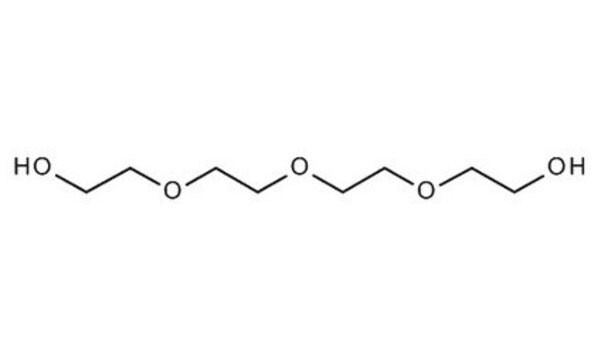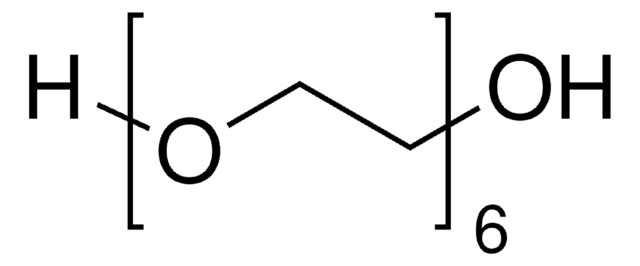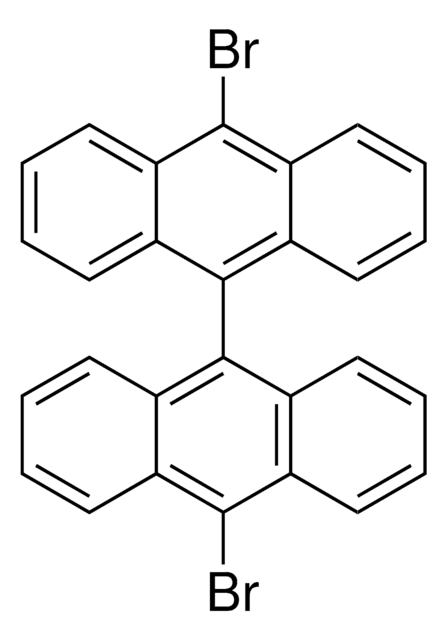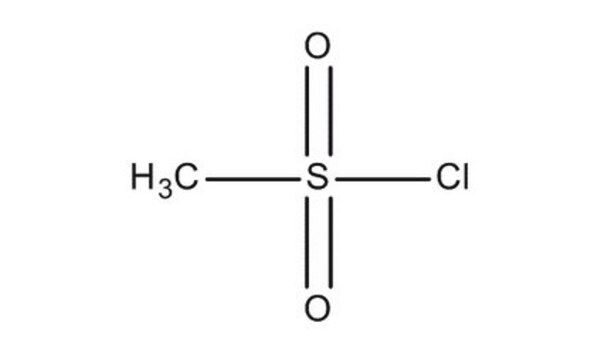8.08245
Triethylene glycol
for synthesis
Synonym(s):
Triethylene glycol, Triglycol
About This Item
Recommended Products
vapor pressure
<0.01 hPa ( 20 °C)
Quality Level
assay
≥99% (GC)
form
liquid
autoignition temp.
370 °C
potency
17000 mg/kg LD50, oral (Rat)
>5000 mg/kg LD50, skin (Rat)
expl. lim.
0.9-9.2 % (v/v)
pH
6.5-7.5 (20 °C, 100 g/L in H2O)
bp
285-295 °C/1013 hPa
mp
-7 °C
transition temp
flash point 165 °C
density
1.123 g/cm3 at 20 °C
storage temp.
2-30°C
InChI
1S/C6H14O4/c7-1-3-9-5-6-10-4-2-8/h7-8H,1-6H2
InChI key
ZIBGPFATKBEMQZ-UHFFFAOYSA-N
Application
- Elucidating the Role of Reduction Kinetics in the Phase-Controlled Growth on Preformed Nanocrystal Seeds: A Case Study of Ru: This study explores the phase-controlled growth of ruthenium nanocrystals using triethylene glycol as a reducing agent, providing insights into the kinetics of nanomaterial synthesis for catalytic applications (Nguyen et al., 2024).
- Deep Eutectic Solvents as Agents for Improving the Solubility of Edaravone: Experimental and Theoretical Considerations: This research investigates the use of deep eutectic solvents, including those formulated with triethylene glycol, to enhance the solubility of edaravone. The findings demonstrate significant improvements in drug solubility and bioavailability (Jeliński et al., 2024).
- Probing the evaporation dynamics of semi-volatile organic compounds to reveal the thermodynamics of liquid-liquid phase separated aerosol: This study uses triethylene glycol in experiments to understand the evaporation dynamics and thermodynamics of semi-volatile organic compounds in liquid-liquid phase-separated aerosols. The research provides valuable data for atmospheric chemistry and environmental science (Choczynski et al., 2024).
Analysis Note
Density (d 20 °C/ 4 °C): 1.123 - 1.124
Water (K. F.): ≤ 0.30 %
Identity (IR): passes test
Storage Class
10 - Combustible liquids
wgk_germany
WGK 1
flash_point_f
330.8 °F - closed cup
flash_point_c
166 °C - closed cup
Certificates of Analysis (COA)
Search for Certificates of Analysis (COA) by entering the products Lot/Batch Number. Lot and Batch Numbers can be found on a product’s label following the words ‘Lot’ or ‘Batch’.
Already Own This Product?
Find documentation for the products that you have recently purchased in the Document Library.
Customers Also Viewed
Our team of scientists has experience in all areas of research including Life Science, Material Science, Chemical Synthesis, Chromatography, Analytical and many others.
Contact Technical Service










![2-[2-(2-Aminoethoxy)ethoxy]ethanol ≥96.0% (GC)](/deepweb/assets/sigmaaldrich/product/structures/237/185/b94eadd2-5a2c-4a5b-a13d-3d3905df0dbc/640/b94eadd2-5a2c-4a5b-a13d-3d3905df0dbc.png)

